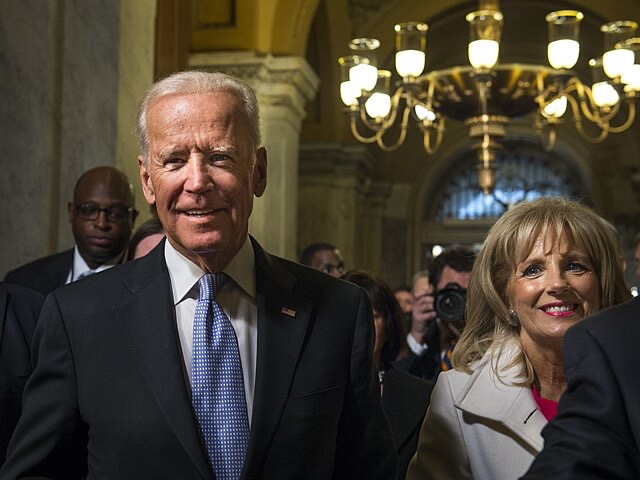Breaking News – Government Accused of Withholding Vaccine Risk Data
In a shocking turn of events, a newly released Congressional report has accused high-ranking Biden administration officials of deliberately suppressing data about potentially deadly side effects of the COVID-19 vaccines. According to the Senate’s investigation, evidence suggests that both the Centers for Disease Control and Prevention (CDC) and the Food and Drug Administration (FDA) delayed warnings about the increased risk of heart-related conditions such as myocarditis and pericarditis linked to mRNA vaccines like Pfizer and Moderna.
This damning report ignites fresh concerns about government transparency, ethical responsibility, and the fine line between managing a health crisis and manipulating public perception. With public trust already frayed from the pandemic’s turbulence, these revelations could fuel growing skepticism toward federal health institutions.
Background: What the Congressional Report Reveals
The 63-page report, spearheaded by Sen. Ron Johnson, is the result of an exhaustive investigation by the Senate Committee on Homeland Security and Governmental Affairs. It uncovers a trail of ignored warnings, buried data, and withheld information, painting a disturbing picture of how health officials prioritized vaccine confidence over complete disclosure.
The investigation reveals that as early as February 2021, officials had credible data indicating a significant rise in myocarditis cases—especially among young males—following COVID-19 vaccinations. Yet the CDC waited until June 2021 to publicly acknowledge the risks. The FDA also delayed labeling updates on vaccine packaging until public and international pressure mounted.
What’s even more concerning is the nature of internal communications disclosed in the report. Emails and meeting notes show an active debate within federal health agencies about how much information to share with the public. The key concern? That any alarming disclosures could result in widespread vaccine hesitancy at a time when mass immunization was the top national priority.
Suppressed Science: What Officials Knew and When
The most explosive parts of the Congressional report involve detailed internal communications from the FDA and CDC. In these, officials express knowledge of the vaccine side effects but also strategize how best to manage that information without causing public panic.
One particularly alarming instance detailed how several countries, including Israel and Germany, had already flagged increased myocarditis risks by early 2021. The U.S. received the same data but chose to keep it quiet. An internal FDA document acknowledged the signals but recommended postponing public alerts until “further data validation.”
Meanwhile, scientific researchers attempting to raise public awareness—such as Dr. Tracy Beth Hoeg—were reportedly censored or flagged for “misinformation” on social media platforms. This raises serious First Amendment questions, especially when medical professionals are being silenced not for spreading lies but for presenting peer-reviewed studies.
Furthermore, the report shows that health officials went so far as to tweak how data was presented on public dashboards—often minimizing side effect reporting rates or omitting demographic breakdowns that could highlight vulnerable populations.
Myocarditis and Pericarditis: Known but Ignored?
By mid-2021, cases of myocarditis and pericarditis following mRNA vaccinations began to flood medical reporting systems. Hospitals noticed a spike in young, healthy individuals—primarily males—presenting with chest pain, elevated cardiac enzymes, and ECG abnormalities shortly after their second vaccine dose.
Despite mounting evidence, the CDC continued to publicly characterize these conditions as “rare and mild,” offering little detail about the severity or long-term health consequences. It wasn’t until an emergency meeting in June 2021 that the agency finally acknowledged the connection—four months after internal data had already revealed the trend.
Doctors and patients were left in the dark, often unaware that the symptoms they were experiencing had already been documented in government records. This lack of timely communication likely delayed diagnosis and treatment for many and could have prevented further cases if warnings had been issued sooner.
The FDA’s eventual move to update vaccine fact sheets in June 2021 came only after international watchdogs, independent scientists, and whistleblowers applied pressure. Even then, the warnings were printed in small font at the bottom of multi-page documents that few Americans ever read.
FDA and CDC: Under Pressure to Maintain Trust
While health agencies often operate under pressure during crises, this report shows how that pressure may have crossed ethical boundaries. The rationale, according to insiders, was to avoid creating vaccine fear that could derail public immunization efforts. But in doing so, transparency—one of the core tenets of public health—was sacrificed.
An internal CDC presentation cited in the report noted: “We need to consider how to introduce this data without creating panic or fueling anti-vaccine narratives.” This approach, critics argue, led to a sanitized version of the truth being shared with the public.
Political influence cannot be ignored either. The Biden administration had made vaccine distribution a cornerstone of its pandemic response. Acknowledging serious side effects would have provided ammunition to political opponents and anti-vaccine activists alike.
The tension between “don’t scare people” and “tell people the truth” lies at the heart of this scandal. And while the intention may have been to protect public health, the fallout from this strategy—mistrust, misinformation, and potentially avoidable injuries—may have done more harm than good.



